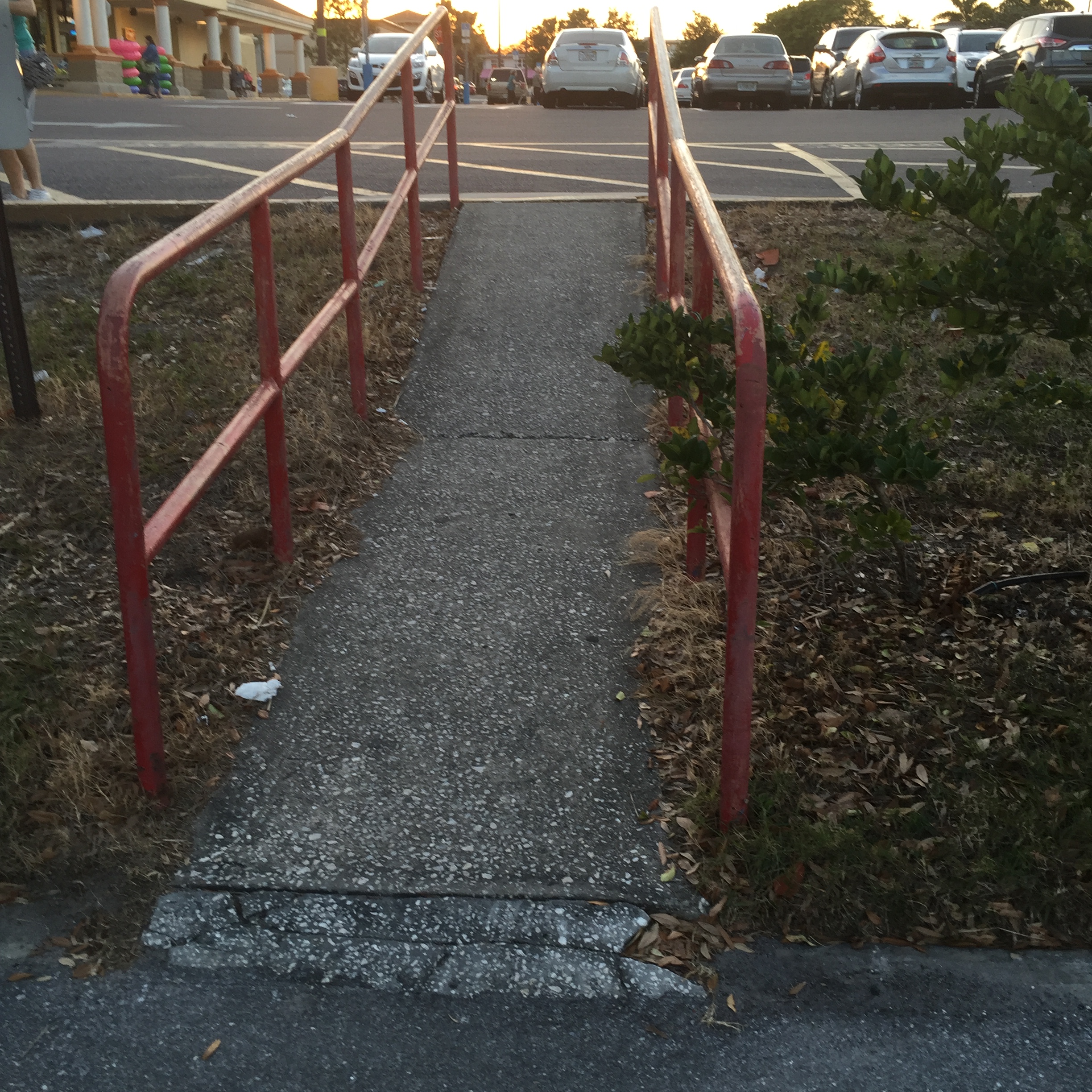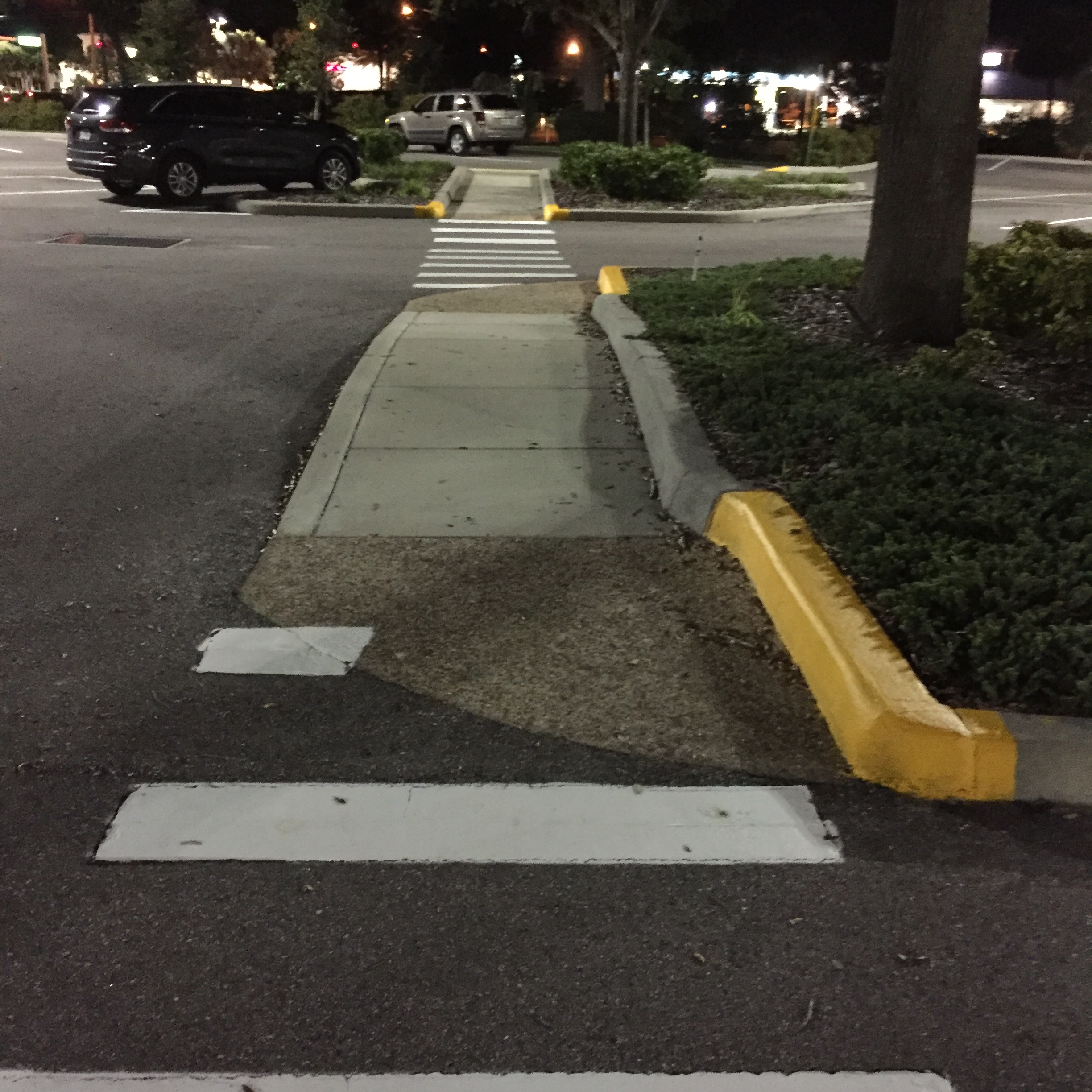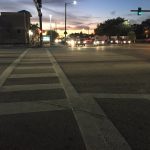Access, the means of approaching or entering a place, is an often overlooked indicator of how successfully a community is evolving from nondescript corridor to place. Shifting from an emphasis on driving to an emphasis on walking, bikes and buses, it’s critical how consciously we plan for access. Access is often thought of in the narrowest terms of automobile accessibility, particularly in suburban and rural areas where the car is king. Our analytical tools, both models and mindset, are often at fault.

Main Street in Safety Harbor is a highly accessible place.
Research shows walkable communities are increasingly popular among all age groups, especially millennials and baby boomers. Numerous elected officials, advocates and professionals also call for more walkable communities. Yet planning and designing for multimodal access is lacking in many communities. It is either not considered, an afterthought or isn’t enforced. Sometimes we have the plans and codes in place, but little changes until key sites or the corner parcel redevelops. That can take years, especially if they are privately owned and profitable, holding back change and frustrating advocates.
Retrofitting buildings or streets is expensive business. In the meantime, there are plenty of things we can control that may seem on the margin, but if we emphasize multimodal access, they can help pedestrians feel invited and can add substantial economic value to the community. One of those things is parking lot design.

A makeshift ramp between a Publix and Walgreens in Belleair Bluffs and an adjacent condominium complex.
We can do better. Outside of downtown areas, there is generally abysmal treatment of pedestrians in private surface parking lots all across Pinellas County. That is because most are old properties that reflect old codes and practices from long-retired professionals. Development in the last 5-10 years does a much better job with pedestrian access. Compare these photos of the Dunedin Causeway Publix shopping center on Curlew Road and Alt. US 19 with West Bay Drive in Belleair Bluffs.

Access to groceries is a critical factor for people of all ages and abilities, but we often fail to design for pedestrian accessibility.
Both are successful and each is in a pretty walkable area by suburban standards. But which parking lot would make you feel more welcome walking there? I thought about this as I noticed two middle-aged women one Saturday morning escorting their frail mothers or mothers-in-law out of the Publix grocery toward the parked car.

Publix Shopping Center at West Bay Drive and Indian Rocks Road. No clear pathway for pedestrians to the front door.

Dunedin Causeway Publix Shopping Center, where well-marked sidewalks connect the grocery store’s front entrance to the Pinellas Trail.
I’ve been thinking a lot about access in Pinellas County as I learn to navigate my way around by car, bike, bus, ferry and on foot. We have an amazing level of accessibility in our county, with numerous downtowns and a dozen or so neighborhood commercial centers, corridors and districts (such as Clearwater Beach, Indian Rocks Beach, Florida Avenue in Palm Harbor, Clearwater-Largo Road in Largo, or Central Avenue and 4th Street in St. Petersburg). Travel options abound in those places, with housing or hotels located nearby to stores, parks and other attractions.
Whether connected by the Pinellas Trail, Pinellas Suncoast Transit Authority buses or trolleys, a network of slower speed streets, good sidewalks and bike facilities, or water taxis, Pinellas has many walkable neighborhood districts. Our gaps are mostly the in-between areas, in communities and private parcels developed along state and county roadways that grew busier and wider in the 1960s through 1990s.
In 2014, the American Planning Association published a policy guide on Aging in Community, which provides guidance for planners and communities about ways to make a community or site more accessible for everyone. Pinellas is a county with a lot of older people, including many in my demographic (ahem) who will likely experience mobility limitations in the next 15-20 years.
Good access is especially critical for public transportation, which depends not just on density, but on proximity and access, to be cost effective and productive. Being a transit rider means you are also a pedestrian. People often walk five to 25 minutes on either end of the bus ride to get to a destination. Just when we need a mobility option like transit, we may face barriers in even reaching the service due to poor corridor planning or lackadaisical site planning.
AARP has been thinking about access, too. In response to public health findings about Aging in Place and the requests of its members, the venerable and highly respected senior advocacy organization conducted nationwide surveys in 2014 on the preferences of those 50 and older for livable communities. AARP’s research, supplemented with findings of others in the fields of health, community design and planning, led to the development of the AARP Livability Index.
The Livability Index is a tool designed to help people evaluate their community, or prospective community, for access and other related features using a variety of factors that yOu can weight in terms of your individual preference. It helps communicate key information about the importance of access so that individuals, families, businesses and public agencies can make better decisions about their future. It’s worth seeing how your neighborhood or city compares with other neighborhoods and communities.
I recently met with Jeff Johnson, Laura Cantwell and Michelle Cyr of AARP Florida to discuss ways we can work together on a shared livability agenda for Pinellas County and Tampa Bay. We had a great introduction, and I am very impressed with the work AARP is doing nationally, statewide and in the cities of Tampa and St. Petersburg to advance the cause of age-friendly communities.
We can be important partners to help strengthen understanding of how planning and designing for accessible communities improves safety and community cohesion, saves money, generates economic value and creates places where people of all ages and abilities want to live, work and visit. I look forward to working with AARP and each of our communities to make Pinellas County Florida’s safest and most accessible urban county.










